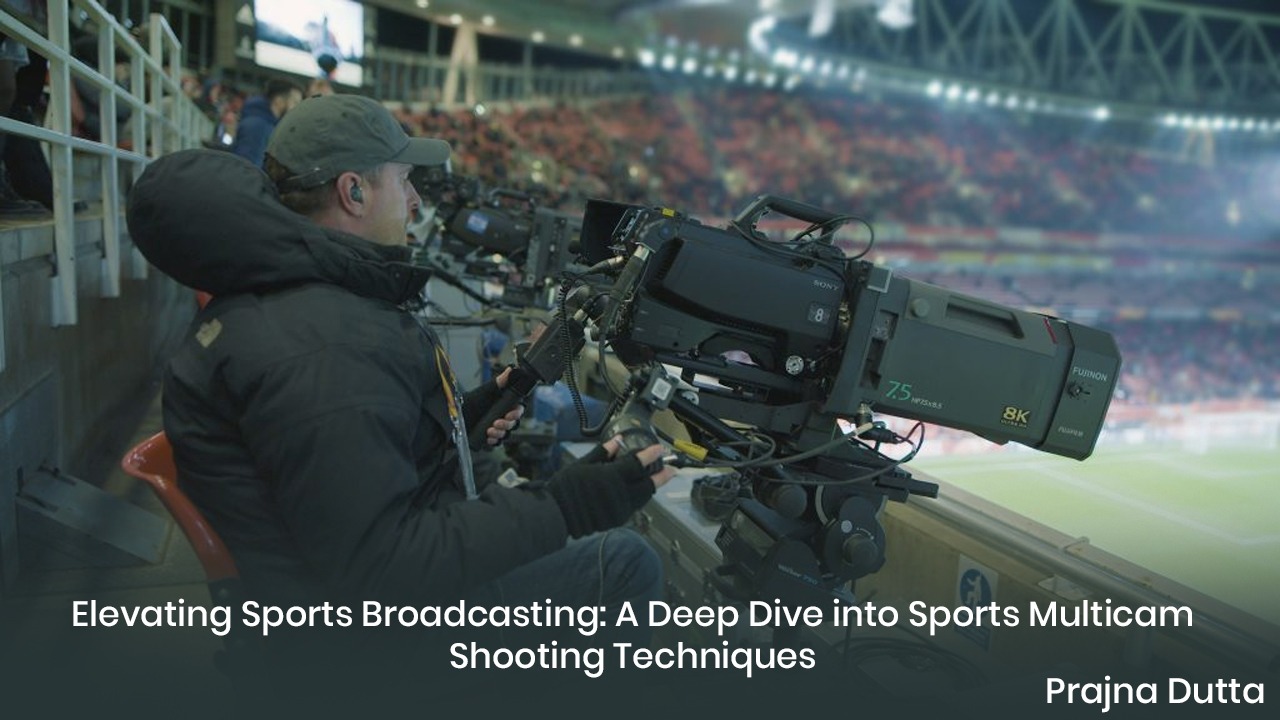In the competitive realm of sports broadcasting, the ability to capture every pivotal moment and emotion is paramount in delivering an immersive viewing experience for fans. Sports multicam shooting techniques serve as the linchpin in achieving this goal, enabling directors and producers to present dynamic, engaging, and comprehensive coverage of sporting events. Whether it's the thunderous roar of a stadium during a football match or the intense back-and-forth action on a basketball court, mastering the art of sports multicam shooting demands a blend of technical prowess, creative finesse, and a profound understanding of the sport being covered. In this article, we will delve into the various techniques and best practices that underpin the mastery of sports multicam shooting.
1. Thorough Pre-Production Planning:
Before the first whistle blows, meticulous pre-production planning is vital for a successful sports multicam shoot. This entails understanding the layout of the sports venue, the intricacies of the game, and the critical moments that must be captured. For example, in a football game, planning for goal-line cameras and wide-angle shots to capture the entirety of the field can be crucial. Collaborating with the director, camera operators, and other crew members to establish shot lists, camera placements, and communication protocols is crucial. Additionally, coordinating with the production team to ensure proper lighting, audio, and logistical arrangements is essential for a seamless shoot.
2. Strategic Camera Placement and Coverage:
Strategic camera placement is fundamental to capturing the excitement and drama of sports events from multiple angles. For instance, in a basketball game, wide shots can offer a sweeping view of the court, while close-ups and medium shots can spotlight players' reactions and intricate ball handling. A mix of static and mobile cameras, including handheld, jib, and robotic cameras, can add dynamism and variety to the coverage. Understanding the flow of the game and anticipating key moments enable camera operators to position themselves for optimal coverage.
3. Coordination and Communication:
Effective communication and coordination among camera operators, directors, and the production team are essential for synchronizing the multicam coverage. Clear communication protocols and cues help anticipate transitions, replays, and key moments, ensuring that every angle is captured without missing a beat. Utilizing intercom systems, visual cues, and rehearsals can significantly enhance the coordination among the team members.
4. Seamless Transitions and Replays:
Seamless transitions between different camera angles and shots are critical for maintaining the flow and rhythm of the broadcast. Directors must anticipate the action and seamlessly switch between cameras to provide viewers with the best viewing experience. For example, in a soccer match, a quick transition from a wide shot capturing the entire field to a close-up of a player scoring a goal can heighten the viewer's sense of being right in the midst of the action. Additionally, the ability to capture and deliver instant replays of crucial moments adds an extra layer of excitement and analysis to the broadcast.
5. Embracing Technological Innovations:
The advancement of technology has revolutionized sports multicam shooting, offering new tools and techniques to elevate the viewing experience. Innovations such as 4K and 8K resolution cameras, high-speed cameras for slow-motion replays, and virtual and augmented reality technologies have expanded the creative possibilities for capturing and presenting sports events.
6. Post-Production and Editing:
Post-production plays a pivotal role in shaping the final presentation of sports events. Skilled editors work with the multitude of camera feeds to craft a compelling and cohesive narrative that brings the excitement and drama of the game to life. Utilizing advanced editing software, graphics, and visual effects, editors can enhance the viewing experience and create engaging highlight reels and analysis segments. For instance, a well-edited sequence of slow-motion replays and close-ups can accentuate the skill and finesse of a tennis player's winning shot, adding an extra layer of insight and appreciation for the athleticism on display.
By incorporating these techniques and practices, broadcasters can elevate the quality of sports coverage, further immersing viewers into the heart of the action and intensifying their connection to the sports they love.
In conclusion, mastering the art of sports multicam shooting techniques demands a combination of technical expertise, creative vision, and seamless coordination. By carefully planning, strategically placing cameras, embracing technological advancements, and skillfully editing the footage, professionals can deliver captivating and immersive sports broadcasts that resonate with audiences.

Comments